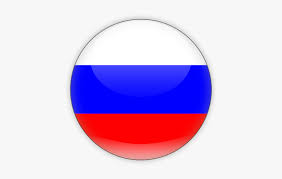
AMWA – EMWA – ISMPP Joint Position Statement on Predatory Publishing
Released July 2019
DOI: 10.1080/03007995.2019.1646535
The American Medical Writers Association (AMWA), the European Medical Writers Association (EMWA), and the International Society for Medical Publication Professionals (ISMPP) recognize the challenges to scientific publishing being posed by predatory journals and their publishers, which employ practices undermining the quality, integrity, and reliability of published scientific research. This joint position statement complements several other sets of guidelines that have helped define the characteristics of a predatory journal.1-5
Predatory journals pose a serious threat both to researchers publishing the results of their work and to the peer-reviewed medical literature itself. These publications differ from legitimate open-access journals6 in that predatory journals subvert the peer-review publication system for the sole purpose of financial gain with little evident concern for ethical behavior.7
Organizations such as the World Association of Medical Editors (WAME), the Committee on Publication Ethics (COPE), the International Committee of Medical Journal Editors (ICMJE), and the Council of Science Editors (CSE) support good publication practices that are now widely recognized.6,8-10 Predatory journals do not adhere to these practices but instead exploit the Gold Open Access publishing model (for which authors pay a publication fee).11 To generate revenue, these journals intentionally misrepresent practices of editorial and peer review, methods of journal operation, article process charging, dissemination, indexing, and archiving.1
Harm to the scientific literature will be the ultimate result if predatory publishing proliferates. Legitimate research carried out with the best of intentions might be lost if it is not recorded, cited, or made accessible in the long term, and the scientific record is at risk of being corrupted.1 But dangers to authors also exist in that their reputations can be damaged as a result of having their work published in predatory journals or being unknowingly “appointed” to their editorial boards. Furthermore, authors may find themselves trapped after they realize they have submitted an article to a predatory journal. There is a potential risk that some journals might not return submitted manuscripts or will publish a submitted paper even after an author has protested.
The large increase in scientific journals, including those that are predatory,12 over the past 15 years can make the task of distinguishing predatory or “pseudo” journals difficult. However, online tools are available to help authors in this effort,1,8 and certain characteristics have been identified as being typical of predatory journals and their publishers:
- publishers or journals sending emails that aggressively solicit researchers
- a journal name that sounds somewhat familiar—but is actually a devious permutation of a legitimate journal name
- a website that appears unprofessional, with poor graphics, misused language, dead links, and aggressive advertising
- no street address or in-country telephone number noted on the journal or publisher’s website, or a fake address/phone number provided
- a lack of journal indexing in a recognized citation system such as PubMed13 or within a legitimate online directory such as the Directory of Open Access Journals (DOAJ)14
- promises of unrealistically quick peer review, or no information provided about a journal’s peer-review process
- article processing charges that are not transparent (and may be either very high or very low) or are payable on submission (that is, not dependent on the outcome of peer review)
- claims made of broad coverage across multiple specialties in medicine or across multiple subspecialties in a particular discipline
- a large stable of journals that have been started very recently and/or that contain no or few published articles, are inaccessible, or are of obviously poor quality
- an editorial board consisting of members from outside the specialty or outside the country in which the journal is published, or board members who are unknown to someone experienced in publishing in the field
- a submission system that is overly simple with few questions asked and no conflict-of-interest or authorship qualification information requested.
Authors should not purposely choose to submit manuscripts to predatory journals to augment their own record of publication, as has been seen more recently.15,16 The conscious and deliberate submission of manuscripts to predatory journals is not ethical. Medical writers and editors, as well as researchers, have a responsibility to evaluate the integrity, history, practices, and reputation of the journals to which their research is submitted.8 We encourage all authors to carry out due diligence by examining the reputation of the publications to which they submit, and send their work only to those journals that provide proper peer review and that genuinely seek to contribute to the scientific literature.
The scientific community must be made fully aware of the harm that publishing in predatory journals poses and understand how to avoid it. AMWA, EMWA, and ISMPP are committed to educating our members about predatory publishing and the responsibilities of medical writers and publication professionals in addressing this significant issue.
References:
- Laine C, Winker MA. Identifying Predatory or Pseudo-Journals. World Association of Medical Editors. February 18, 2017. http://www.wame.org/identifying-predatory-or-pseudo-journals. Accessed June 18, 2019.
- Cabell’s Blacklist Violations. http://www2.cabells.com/blacklist-criteria. Accessed June 18, 2019.
- Cobey KD, Lalu MM, Skidmore B, Ahmadzai N, Grudniewicz A, Moher D. What is a predatory journal? A scoping review. Version 2. F1000Res. 2018;7:1001. DOI: 10.12688/f1000research.15256.2.
- Beall J. Predatory publishers are corrupting open access. Nature. 2012;489:179. DOI: 10.1038/489179a.
- Beall’s List of Predatory Publishers. http://openscience.ens.fr/ABOUT_OPEN_ACCESS/BLOGS/2017_01_23_Jeffrey_Beall_last_list_of_predatory_journals.pdf. Accessed June 18, 2019.
- Open Access Scholarly Publishers Association – Code of Conduct. https://oaspa.org/membership/code-of-conduct. Accessed June 18, 2019.
- International Committee of Medical Journal Editors. “Fake,” “Predatory,” and “Pseudo” Journals: Charlatans Threatening Trust in Science. http://www.icmje.org/news-and-editorials/fake_predatory_pseudo_journals_dec17.html. Accessed June 18, 2019.
- International Committee of Medical Journal Editors. Responsibilities in the Submission and Peer-Review Process. http://www.icmje.org/recommendations/browse/roles-and-responsibilities/responsibilities-in-the-submission-and-peer-peview-process.html. Accessed June 18, 2019.
- Council of Science Editors. Predatory or Deceptive Publishers – Recommendations for Caution. https://www.councilscienceeditors.org/resource-library/editorial-policies/cse-policies/approved-by-the-cse-board-of-directors/predatory-deceptive-publishers-recommendations-caution. Accessed June 18, 2019.
- Berger M. Everything You Ever Wanted to Know About Predatory Publishing but Were Afraid to Ask. http://www.ala.org/acrl/sites/ala.org.acrl/files/content/conferences/confsandpreconfs/2017/EverythingYouEverWantedtoKnowAboutPredatoryPublishing.pdf. Accessed June 18, 2019.
- Mizera K. What is Gold Open Access – useful links. https://openscience.com/what-is-gold-open-access/. Accessed June 18, 2019.
- Shen C, Bjork BC. 'Predatory' open access: a longitudinal study of article volumes and market characteristics. BMC Med. 2015;13:230. DOI: 10.1186/s12916-015-0469-2.
- https://www.ncbi.nlm.nih.gov/pubmed. Accessed June 18, 2019.
- Directory of Open Access Journals. https://doaj.org/. Accessed June 18, 2019.
- Moher D, Shamseer L, Cobey KD, et al. Stop this waste of people, animals and money. Nature 2017;549:23-25. DOI: 10.1038/549023a.
- Sharma H, Verma S. Predatory journals: the rise of worthless biomedical science. J Postgrad Med 2018;64:226-31. DOI: 10.4103/jpgm.JPGM_347_18.
Acknowledgements
This joint position statement was reviewed and approved by representatives of AMWA, EMWA, and ISMPP. Preparation of this statement was possible thanks to the efforts of the members of the Writing Committee (Barbara Good and Mary Kemper, AMWA; Slavka Baronikova and Julia Donnelly, EMWA; Jan Seal-Roberts and Donna Simcoe, ISMPP), and the organizational reviewers (Shari Rager, AMWA; Tiziana von Bruchhausen and Beatrix Doerr, EMWA; Anna Geraci and Al Weigel, ISMPP).
(2019) AMWA–EMWA–ISMPP joint position statement on predatory publishing, Current Medical Research and Opinion, DOI: 10.1080/03007995.2019.1646535


 Italiano
Italiano Português
Português Deutsch
Deutsch Română
Română Nederlandse
Nederlandse Svenska
Svenska Polskie
Polskie Ελληνικά
Ελληνικά Español
Español Français
Français Czech
Czech Turkish
Turkish Armenian
Armenian Serbian
Serbian Hungary
Hungary Arabic
Arabic Japanese
Japanese Chinese Mandarin
Chinese Mandarin Bulgarian
Bulgarian
 Russian
Russian